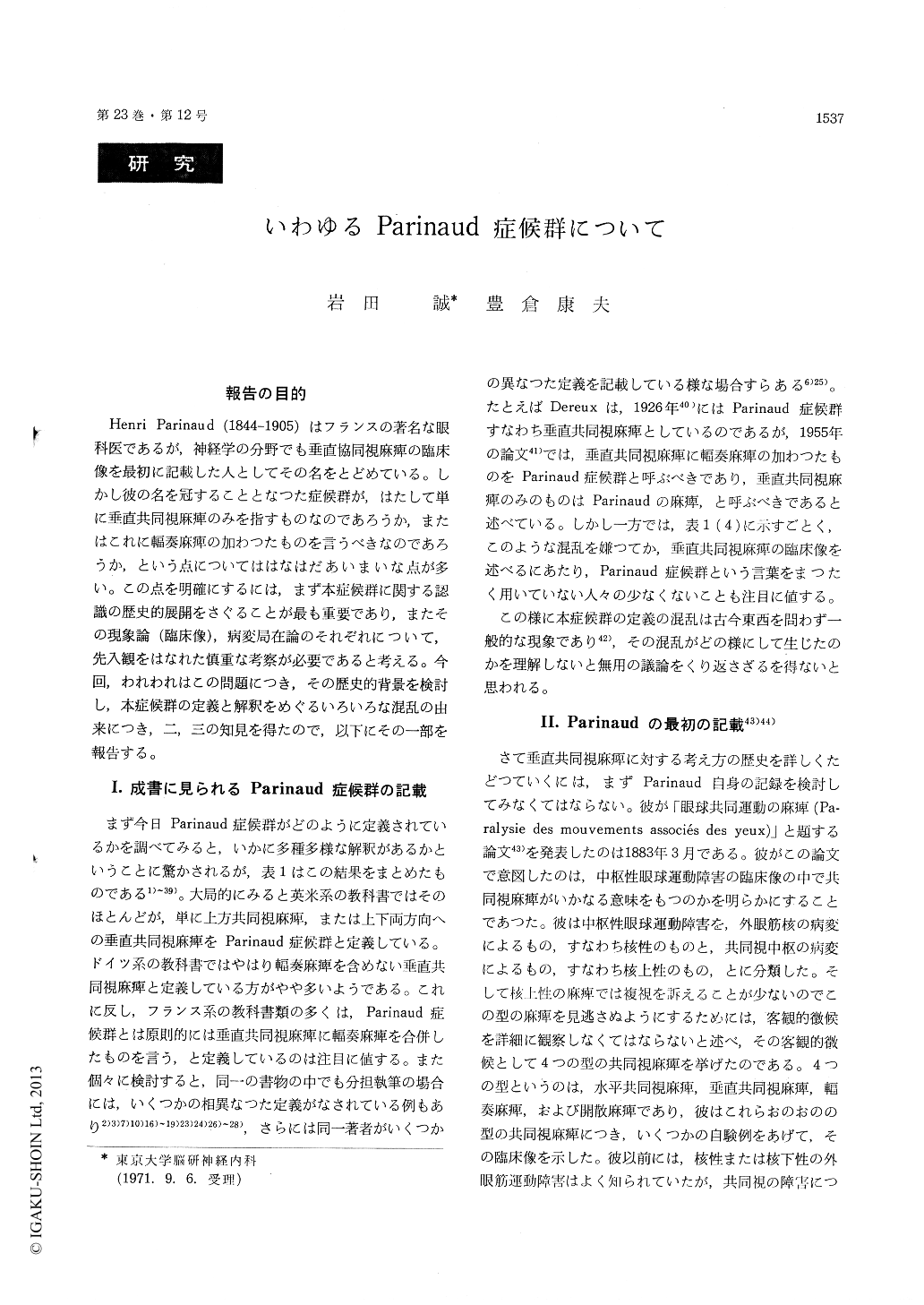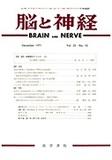Japanese
English
- 有料閲覧
- Abstract 文献概要
- 1ページ目 Look Inside
報告の目的
Henri Parinaud (1844-1905)はフランスの著名な眼科医であるが,神経学の分野でも垂直協同視麻痺の臨床像を最初に記載した人としてその名をとどめている。しかし彼の名を冠することとなつた症候群が,はたして単に垂直共同視麻痺のみを指すものなのであろうか,またはこれに輻奏麻痺の加わつたものを言うべきなのであろうか,という点についてははなはだあいまいな点が多い。この点を明確にするには,まず本症候群に関する認識の歴史的展開をさぐることが最も重要であり,またその現象論(臨床像),病変局在論のそれぞれについて,先入観をはなれた慎重な考察が必要であると考える。今回,われわれはこの問題につき,その歴史的背景を検討し,本症候群の定義と解釈をめぐるいろいろな混乱の由来につき,二,三の知見を得たので,以下にその一部を報告する。
The literature concerning so-called "Parinaud syndrome" has been reviewed with particular attention to its definition.
In most of the contemporary Anglo-Saxon and German textbooks of neurology, internal-medicine and ophthalmology, "Parinaud syndrome" is gener-ally defined as simple paralysis of upward or verti-cal gaze ; on the other hand, many French authorsconsider this syndrome in principle consisting of paralysis of vertical gaze associated with conver-gence palsy.
The first description on the clinical features of paralysis of vertical gaze should be credited to Henoch (1864), earlier than Parinaud (1883). How-ever, the Parinaud's original article (1883) is no less important than the Henoch's, because of his systemic analysis of the clinical features of vertical gaze palsy and of his hypothesis that this type of the gaze palsy might be caused by the lesion affect-ing the supranuclear association center for vertical gaze.
Parinaud, himself, believed that the paralysis of vertical gaze is always associated with convergence palsy, and many French authors under his influence have interpreted "Parinaud syndrome" as paralysis of vertical gaze accompanied by loss of convergence.
Most of Anglo-Saxon and German authors, how-ever, have succeeded the opinion proposed by von Kornilow (1903), then Posey (1904) and Spiller (1905) that vertical gaze paralysis is not always associated with paralysis of convergence, and in these countries "Parinaud syndrome" is regarded in general as simple paralysis of vertical gaze.
Most clinico-anatomical studies have not yet beensuitable to discuss the precise localization of the lesions producing vertical gaze palsy, partly due to the lack of pertinent clinical observations and partly to the inappropriate character of the lesions. Until the present no regional difference between the lesions producing simple paralysis of vertical gaze and those causing vertical gaze palsy associated with loss of convergence has ever been elucidated.
Accordingly it seems to be meaningless to discuss whether the convergence palsy must be included in "Parinaud syndrome" or not. The more accurate descriptions of the full clinical features of vertical gaze palsy instead of using the eponym would still be essential for further evaluations of the patho-physiology and anatomical localization of this peculiar phenomenon.

Copyright © 1971, Igaku-Shoin Ltd. All rights reserved.


